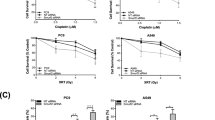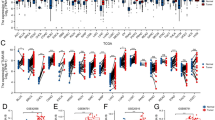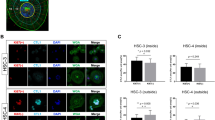Abstract
Aim:
To investigate the effects of the transducer of ErbB-2.1 (TOB1) on the proliferation, migration and invasion of human lung cancer cells in vitro.
Methods:
Human lung cancer cell lines (95-D, A549, NCI-H1299, NCI-H1975, NCI-H661, NCI-H446, NCI-H1395, and Calu-3) and the normal human bronchial epithelial (HBE) cell line were tested. The expression levels of TOB1 in the cells were determined with Western blot and RT-PCR analyses. TOB1-overexpressing cell line 95-D/TOB1 was constructed using lipofectamine-induced TOB1 recombinant plasmid transfection and selective G418 cell culture. The A549 cells were transcend-transfected with TOB1-siRNA. MTT assay, flow cytometry and Western blot analysis were used to examine the effects of TOB1 on cancer cell proliferation and wound healing. Transwell invasive assay was performed to evaluate the effects of TOB1 on cancer cell migration and invasion. The activity of MMP2 and MMP9 was measured using gelatin zymography assay.
Results:
The expression levels of TOB1 in the 8 human lung cancer cell lines were significantly lower than that in HBE cells. TOB1 overexpression inhibited the proliferation of 95-D cells, whereas TOB1 knockdown with TOB1-siRNA promoted the growth of A549 cells. Decreased cell migration and invasion were detected in 95-D/TOB1 cells, and the suppression of TOB1 enhanced the metastasis in A549 cells. TOB1 overexpression not only increased the expression of the phosphatase and tensin homolog (PTEN), an important tumor suppressor, but also regulated the downstream effectors in the PI3K/PTEN signaling pathway, including Akt, ERK1/2, etc. In contrast, decreased expression of TOB1 oppositely regulated the expression of these factors. TOB1 also regulates the gelatinase activity of MMP2 and MMP9 in lung cancer cells.
Conclusion:
The results demonstrate that the PI3K/PTEN pathway, which is essential for carcinogenesis, angiogenesis, and metastasis, may be one of the possible signaling pathways for regulation of proliferation and metastasis of human lung cancer cells by TOB1 in vitro.
Similar content being viewed by others
Log in or create a free account to read this content
Gain free access to this article, as well as selected content from this journal and more on nature.com
or
Accession codes
References
Jemal A, Bray F, Center MM, Ferlay J, Ward E, Forman D . Global cancer statistics. CA Cancer J Clin 2011; 61: 69–90.
Inamura K, Ishikawa Y . Lung cancer progression and metastasis from the prognostic point of view. Clin Exp Metastasis 2010; 27: 389–97.
Mihaljevic AL, Michalski CW, Friess H, Kleeff J . Molecular mechanism of pancreatic cancer — understanding proliferation, invasion, and metastasis. Langenbecks Arch Surg 2010; 395: 295–308.
Hoon DS, Ferris R, Tanaka R, Chong KK, Alix-Panabieres C, Pantel K . Molecular mechanisms of metastasis. J Surg Oncol 2011; 103: 508–17.
Andjelkovic T, Bankovic J, Stojsic J, Milinkovic V, Podolski-Renic A, Ruzdijic S, et al. Coalterations of p53 and PTEN tumor suppressor genes in non-small cell lung carcinoma patients. Transl Res 2011; 157: 19–28.
Yoneda M, Suzuki T, Nakamura T, Ajima R, Yoshida Y, Kakuta S, et al. Deficiency of antiproliferative family protein Ana correlates with development of lung adenocarcinoma. Cancer Sci 2009; 100: 225–32.
Mukhopadhyay UK, Mooney P, Jia L, Eves R, Raptis L, Mak AS . Doubles game: Src-Stat3 versus p53-PTEN in cellular migration and invasion. Mol Cell Biol 2010; 30: 4980–95.
Cristofanilli M, Krishnamurthy S, Guerra L, Broglio K, Arun B, Booser DJ, et al. A nonreplicating adenoviral vector that contains the wild-type p53 transgene combined with chemotherapy for primary breast cancer: safety, efficacy, and biologic activity of a novel gene-therapy approach. Cancer 2006; 107: 935–44.
Matsuda S, Kawamura-Tsuzuku J, Ohsugi M, Yoshida M, Emi M, Nakamura Y, et al. Tob, a novel protein that interacts with p185erbB2, is associated with anti-proliferative activity. Oncogene 1996; 12: 705–13.
Winkler GS . The mammalian anti-proliferative BTG/Tob protein family. J Cell Physiol 2010; 222: 66–72.
Wang XM, Gao X, Zhang XH, Tu YY, Jin ML, Zhao GP, et al. The negative cell cycle regulator, Tob (transducer of ErbB-2), is involved in motor skill learning. Biochem Biophys Res Commun 2006; 340: 1023–7.
Jia S, Meng A . Tob genes in development and homeostasis. Dev Dyn 2007; 236: 913–21.
Mauxion F, Chen CY, Seraphin B, Shyu AB . BTG/TOB factors impact deadenylases. Trends Biochem Sci 2009; 34: 640–7.
Yoshida Y, Nakamura T, Komoda M, Satoh H, Suzuki T, Tsuzuku JK, et al. Mice lacking a transcriptional corepressor Tob are predisposed to cancer. Genes Dev 2003; 17: 1201–6.
Iwanaga K, Sueoka N, Sato A, Sakuragi T, Sakao Y, Tominaga M, et al. Alteration of expression or phosphorylation status of tob, a novel tumor suppressor gene product, is an early event in lung cancer. Cancer Lett 2003; 202: 71–9.
Ito Y, Suzuki T, Yoshida H, Tomoda C, Uruno T, Takamura Y, et al. Phosphorylation and inactivation of Tob contributes to the progression of papillary carcinoma of the thyroid. Cancer Lett 2005; 220: 237–42.
Yoshida Y, von Bubnoff A, Ikematsu N, Blitz IL, Tsuzuku JK, Yoshida EH, et al. Tob proteins enhance inhibitory Smad-receptor interactions to repress BMP signaling. Mech Dev 2003; 120: 629–37.
Helms MW, Kemming D, Contag CH, Pospisil H, Bartkowiak K, Wang A, et al. TOB1 is regulated by EGF-dependent HER2 and EGFR signaling, is highly phosphorylated, and indicates poor prognosis in node-negative breast cancer. Cancer Res 2009; 69: 5049–56.
Yoshida Y, Tanaka S, Umemori H, Minowa O, Usui M, Ikematsu N, et al. Negative regulation of BMP/Smad signaling by Tob in osteoblasts. Cell 2000; 103: 1085–97.
Wu QF, Liu C, Tai MH, Liu D, Lei L, Wang RT, et al. Knockdown of FoxM1 by siRNA interference decreases cell proliferation, induces cell cycle arrest and inhibits cell invasion in MHCC-97H cells in vitro. Acta Pharmacol Sin 2010; 31: 361–6.
Li XL, Meng QH, Fan SJ . Adenovirus-mediated expression of UHRF1 reduces the radiosensitivity of cervical cancer HeLa cells to gamma-irradiation. Acta Pharmacol Sin 2009; 30: 458–66.
Jiao Y, Ge CM, Meng QH, Cao JP, Tong J, Fan SJ . Adenovirus-mediated expression of Tob1 sensitizes breast cancer cells to ionizing radiation. Acta Pharmacol Sin 2007; 28: 1628–36.
Jiao Y, Ge CM, Meng QH, Cao JP, Tong J, Fan SJ . Dihydroartemisinin is an inhibitor of ovarian cancer cell growth. Acta Pharmacol Sin 2007; 28: 1045–56.
Wu CY, Wu MS, Chiang EP, Chen YJ, Chen CJ, Chi NH, et al. Plasma matrix metalloproteinase-9 level is better than serum matrix metalloproteinase-9 level to predict gastric cancer evolution. Clin Cancer Res 2007; 13: 2054–60.
Takata F, Dohgu S, Matsumoto J, Takahashi H, Machida T, Wakigawa T, et al. Brain pericytes among cells constituting the blood-brain barrier are highly sensitive to tumor necrosis factor-alpha, releasing matrix metalloproteinase-9 and migrating in vitro. J Neuroinflammation 2011; 8: 106.
O'Malley S, Su H, Zhang T, Ng C, Ge H, Tang CK . TOB suppresses breast cancer tumorigenesis. Int J Cancer 2009; 125: 1805–13.
Yanagie H, Tanabe T, Sumimoto H, Sugiyama H, Matsuda S, Nonaka Y, et al. Tumor growth suppression by adenovirus-mediated introduction of a cell-growth-suppressing gene tob in a pancreatic cancer model. Biomed Pharmacother 2009; 63: 275–86.
Park GT, Seo EY, Lee KM, Lee DY, Yang JM . Tob is a potential marker gene for the basal layer of the epidermis and is stably expressed in human primary keratinocytes. Br J Dermatol 2006; 154: 411–8.
Tzachanis D, Boussiotis VA . Tob, a member of the APRO family, regulates immunological quiescence and tumor suppression. Cell Cycle 2009; 8: 1019–25.
Lee EY, Muller WJ . Oncogenes and tumor suppressor genes. Cold Spring Harb Perspect Biol 2010; 2: a003236.
Hurst DR, Welch DR . Metastasis suppressor genes at the interface between the environment and tumor cell growth. Int Rev Cell Mol Biol 2011; 286: 107–80.
Lin ML, Lu YC, Chung JG, Wang SG, Lin HT, Kang SE, et al. Down-regulation of MMP-2 through the p38 MAPK-NF-kappaB-dependent pathway by aloe-emodin leads to inhibition of nasopharyngeal carcinoma cell invasion. Mol Carcinog 2010; 49: 783–97.
Wang S, Cheng Z, Yang X, Deng K, Cao Y, Chen H, et al. Effect of wild type PTEN gene on proliferation and invasion of multiple myeloma. Int J Hematol 2010; 92: 83–94.
Abou Youssif T, Fahmy MA, Koumakpayi IH, Ayala F, Al Marzooqi S, Chen G, et al. The mammalian target of rapamycin pathway is widely activated without PTEN deletion in renal cell carcinoma metastases. Cancer 2011; 117: 290–300.
De Roock W, De Vriendt V, Normanno N, Ciardiello F, Tejpar S . KRAS, BRAF, PIK3CA, and PTEN mutations: implications for targeted therapies in metastatic colorectal cancer. Lancet Oncol 2011; 12: 594–603.
Ho-Pun-Cheung A, Assenat E, Bascoul-Mollevi C, Bibeau F, Boissière-Michot F, Cellier D, et al. EGFR and HER3 mRNA expression levels predict distant metastases in locally advanced rectal cancer. Int J Cancer 2011; 128: 2938–46.
Pennell NA, Lynch TJ Jr. Combined inhibition of the VEGFR and EGFR signaling pathways in the treatment of NSCLC. Oncologist 2009; 14: 399–411.
Capodanno A, Camerini A, Orlandini C, Baldini E, Resta ML, Bevilacqua G, et al. Dysregulated PI3K/Akt/PTEN pathway is a marker of a short disease-free survival in node-negative breast carcinoma. Hum Pathol 2009; 40: 1408–17.
Jin G, Kim MJ, Jeon HS, Choi JE, Kim DS, Lee EB, et al. PTEN mutations and relationship to EGFR, ERBB2, KRAS, and TP53 mutations in non-small cell lung cancers. Lung Cancer 2010; 69: 279–83.
Piguet AC, Dufour JF . PI(3)K/PTEN/AKT pathway. J Hepatol 2011; 54: 1317–9.
Weickhardt AJ, Tebbutt NC, Mariadason JM . Strategies for overcoming inherent and acquired resistance to EGFR inhibitors by targeting downstream effectors in the RAS/PI3K pathway. Curr Cancer Drug Targets 2010; 10: 824–33.
Blanco-Aparicio C, Renner O, Leal JF, Carnero A . PTEN, more than the AKT pathway. Carcinogenesis 2007; 28: 1379–86.
Kojima M, Morisaki T, Sasaki N, Nakano K, Mibu R, Tanaka M, et al. Increased nuclear factor-kB activation in human colorectal carcinoma and its correlation with tumor progression. Anticancer Res 2004; 24: 675–81.
Fu C, Jiang A . Generation of tolerogenic dendritic cells via the E-cadherin/beta-catenin-signaling pathway. Immunol Res 2010; 46: 72–8.
Lyon C, Mill C, Tsaousi A, Williams H, George S . Regulation of VSMC behavior by the cadherin-catenin complex. Front Biosci 2011; 16: 644–57.
Zeljko M, Pecina-Slaus N, Martic TN, Kusec V, Beros V, Tomas D . Molecular alterations of E-cadherin and beta-catenin in brain metastases. Front Biosci (Elite Ed) 2011; 3: 616–24.
Stein U, Arlt F, Smith J, Sack U, Herrmann P, Walther W, et al. Intervening in beta-catenin signaling by sulindac inhibits S100A4-dependent colon cancer metastasis. Neoplasia 2011; 13: 131–44.
Phillips BT, Kimble J . A new look at TCF and beta-catenin through the lens of a divergent C elegans Wnt pathway. Dev Cell 2009; 17: 27–34.
Xiong B, Rui Y, Zhang M, Shi K, Jia S, Tian T, et al. Tob1 controls dorsal development of zebrafish embryos by antagonizing maternal beta-catenin transcriptional activity. Dev Cell 2006; 11: 225–38.
Soto-Guzman A, Navarro-Tito N, Castro-Sanchez L, Martinez-Orozco R, Salazar EP . Oleic acid promotes MMP-9 secretion and invasion in breast cancer cells. Clin Exp Metastasis 2010; 27: 505–15.
Sato H, Takino T . Coordinate action of membrane-type matrix metalloproteinase-1 (MT1-MMP) and MMP-2 enhances pericellular proteolysis and invasion. Cancer Sci 2010; 101: 843–7.
Poincloux R, Lizarraga F, Chavrier P . Matrix invasion by tumour cells: a focus on MT1-MMP trafficking to invadopodia. J Cell Sci 2009; 122: 3015–24.
Liu W, Zhou Y, Reske SN, Shen C . PTEN mutation: many birds with one stone in tumorigenesis. Anticancer Res 2008; 28: 3613–9.
Jiang BH, Liu LZ . PI3K/PTEN signaling in angiogenesis and tumorigenesis. Adv Cancer Res 2009; 102: 19–65.
Gildea JJ, Herlevsen M, Harding MA, Gulding KM, Moskaluk CA, Frierson HF, et al. PTEN can inhibit in vitro organotypic and in vivo orthotopic invasion of human bladder cancer cells even in the absence of its lipid phosphatase activity. Oncogene 2004; 23: 6788–97.
Poon JS, Eves R, Mak AS . Both lipid- and protein-phosphatase activities of PTEN contribute to the p53-PTEN anti-invasion pathway. Cell Cycle 2010; 9: 4450–4.
Acknowledgements
This work was supported by grants from the Program for Changjiang Scholars and Innovative Research Team in University (IRT0849), the National Natural Science Foundation of China (No 81071906), the Doctoral Fund of Ministry of Education of China (K512602110), the College Nature Science Foundation of Jiangsu Province (SZ126821), and the Priority Academic Program Development of Jiangsu Higher Education Institutions.
Author information
Authors and Affiliations
Corresponding author
Rights and permissions
About this article
Cite this article
Jiao, Y., Sun, Kk., Zhao, L. et al. Suppression of human lung cancer cell proliferation and metastasis in vitro by the transducer of ErbB-2.1 (TOB1). Acta Pharmacol Sin 33, 250–260 (2012). https://doi.org/10.1038/aps.2011.163
Received:
Accepted:
Published:
Issue date:
DOI: https://doi.org/10.1038/aps.2011.163
Keywords
This article is cited by
-
Dipeptidyl peptidase IV (DPP-4) inhibition alleviates pulmonary arterial remodeling in experimental pulmonary hypertension
Laboratory Investigation (2018)
-
The polymorphism in miR-25 attenuated the oncogenic function in gastric cancer
Tumor Biology (2016)
-
MicroRNA-25 promotes gastric cancer migration, invasion and proliferation by directly targeting transducer of ERBB2, 1 and correlates with poor survival
Oncogene (2015)



